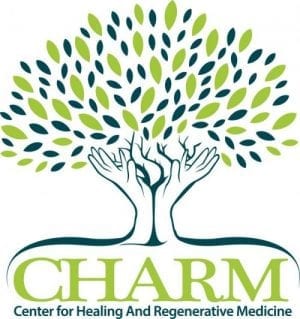If you’ve been exploring non-surgical pain solutions for arthritis, joint pain, or other aches, you may have encountered platelet-rich plasma (PRP) therapy. With approximately 50 million U.S. adults living with chronic pain, it’s no wonder that PRP therapy is being used more frequently to support healing, especially when conservative therapies fall short. Due to a growing interest in regenerative medicine, PRP treatment has become popular for orthopedic conditions, soft tissue injuries, and more.
But could PRP injections treat your pain? Here are the most common questions about PRP therapy to help you decide if it’s the right next step in your treatment plan.
What is Platelet-Rich Plasma Therapy?
Platelets are small cells in your blood that stimulate repair and reduce inflammation. Because they’re rich in growth factors and other essential proteins, they can promote the healing cascade in damaged tissue when injected directly. But they also play a role in resolving inflammation and promoting tissue repair.
Platelet-rich plasma therapy, also referred to as just PRP, uses a concentration of your blood (and the platelets within it) to treat chronic pain through your own body’s natural healing abilities.
Is PRP Therapy Safe?
One of the benefits of PRP injections is their safety. Since PRP injections are made from your own blood, the risk of adverse reaction is extremely low. Injections are performed in sterile settings by trained specialists and carry far fewer risks than surgical procedures or long-term medication use. Mild side effects, such as temporary soreness or swelling at the injection site, are common but usually clear up within a few days.
Is PRP Therapy Painful?
Most patients report mild discomfort during the injection, which can feel similar to a flu shot or standard blood draw. Your provider may use local anesthesia to reduce any pain during the procedure. After the injection, you may experience soreness for 2 to 5 days, but that’s when the healing begins.
What Conditions Can PRP Commonly Treat?
PRP therapy has been studied and used in various musculoskeletal and orthopedic conditions. Some of the most common uses include:
- Joint pain (knee, hip, shoulder, and more)
- Arthritis and osteoarthritis
- For back pain and spinal conditions
- Tendonitis and tendinosis (such as tennis elbow or Achilles tendonitis)
- Ligament injuries and sprains
- Muscle strains
- Nerve damage and other nerve-related issues
What Can I Expect During a PRP Procedure?
A PRP treatment session usually takes less than 2 hours from start to finish. This timeline includes drawing a small amount of your blood, processing it in a centrifuge to concentrate the platelets, and the injection itself. Your physician will inject the concentration directly into the affected area using ultrasound or fluoroscopic guidance to ensure precision.
You will be able to go home shortly after the procedure. You might notice swelling or soreness in the injection area, but you should be able to resume normal activities within a few days.
Who Is a Good Candidate for PRP Therapy?
PRP therapy for orthopedic conditions can be an effective regenerative medicine treatment for many people. Most patients who get PRP injections:
- Have chronic musculoskeletal pain, inflammation, or instability
- Want to avoid or delay surgery
- Are active and want to stay mobile
- Have not found relief with physical therapy or medications
- Are seeking non-surgical pain solutions
Your physician can help determine whether PRP is appropriate for you based on your specific condition and medical history.
Can PRP Be Combined with Other Treatments?
PRP therapy for chronic pain often works best when used as part of a comprehensive treatment plan. Depending on your condition, your provider may recommend combining PRP with:
- Physical therapy or rehabilitative exercises
- Bracing or activity modification
- Other regenerative therapies (prolotherapy and stem cell treatments)
- Orthobiologic injections (bone marrow aspirate concentrate or hyaluronic acid)
Explore Regenerative Medicine for Chronic Pain Today
Living with chronic pain doesn’t have to be your reality. PRP therapy offers a safe, minimally invasive way to promote healing and improve your quality of life—all without surgery. Whether you’re dealing with back pain, arthritis, or a lingering injury, regenerative medicine may provide the relief you’ve been searching for.
If you’re ready to explore the benefits of PRP injections, contact the team at CHARM, your trusted PRP therapy clinic in Austin. By scheduling a consultation, you can discover how PRP therapy can support your healing journey and help you return to the life and activities you love.

